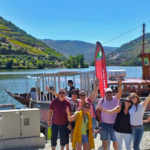Braga, a historic and charming city
Discover Bracara Augusta, today known as Braga, one of the youngest and most vibrant cities in the country, but also the oldest, with 2,000 years of history!
Discover the oldest cathedral in Portugal, with the amazing baroque pipe organ inside. Stroll through the bustling shopping streets of the historic center as you discover the Roman legacy. Find visitable ruins throughout the city and some of Portugal’s most impressive Baroque buildings.
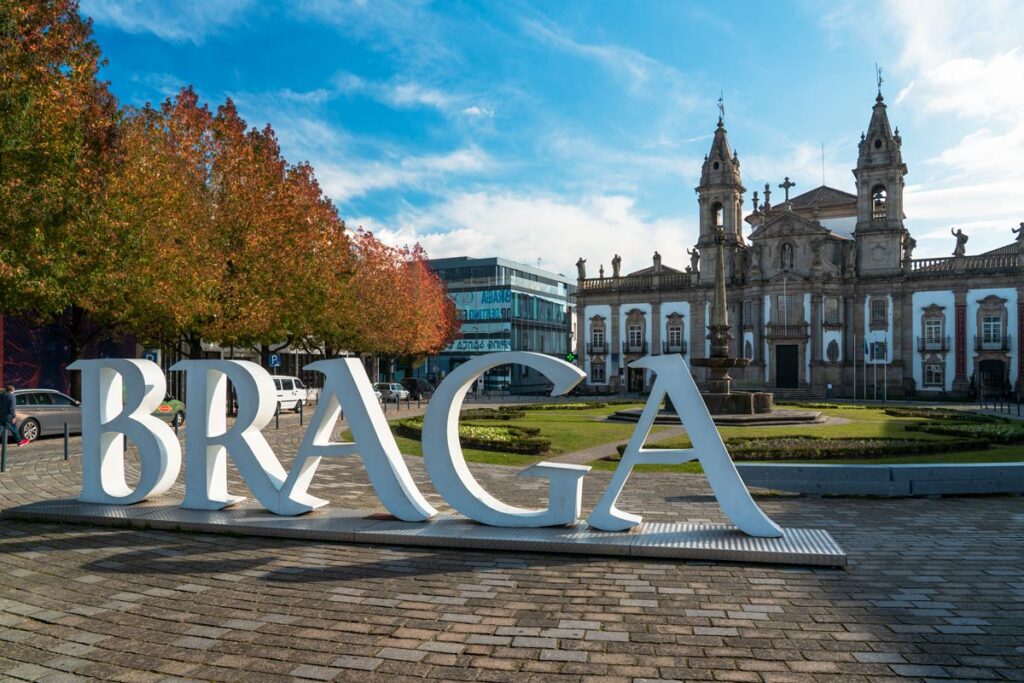
x
Bracara’s Pre-Roman Baths at the Train Station
This Pre-Roman bathhouse, intended for Turkish bath rituals, was identified in 2003 during archaeological works carried out by the Archaeology Unit of the University of Minho, as part of the remodeling works of the railway station. It consists of an oven, a steam room and an intermediate room with benches, the preserved part of which has been integrated into the current railway station building. Information on the operation and use of the bath is available on site, so it can be visited free of charge and during the opening hours of the Train Station.
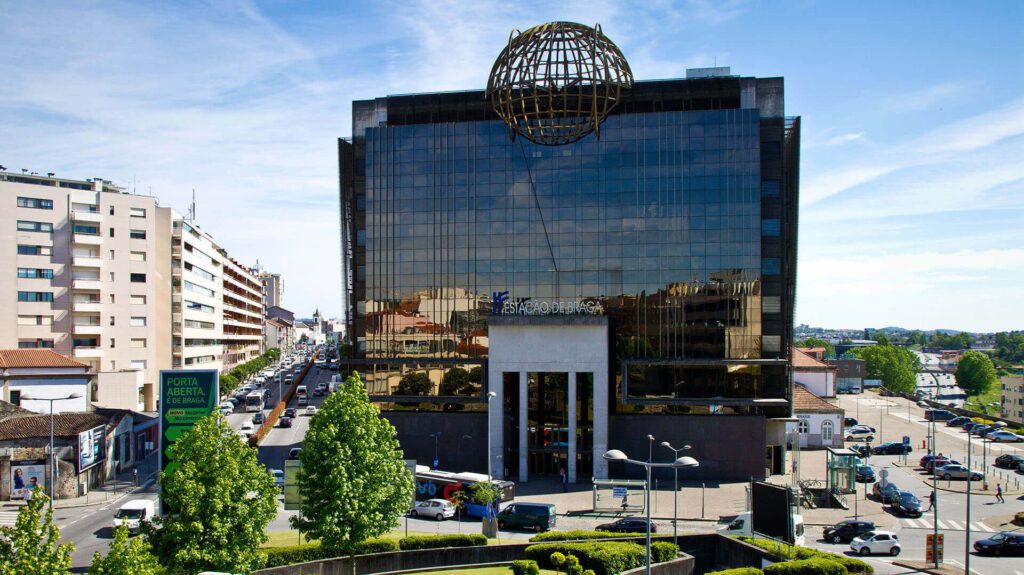
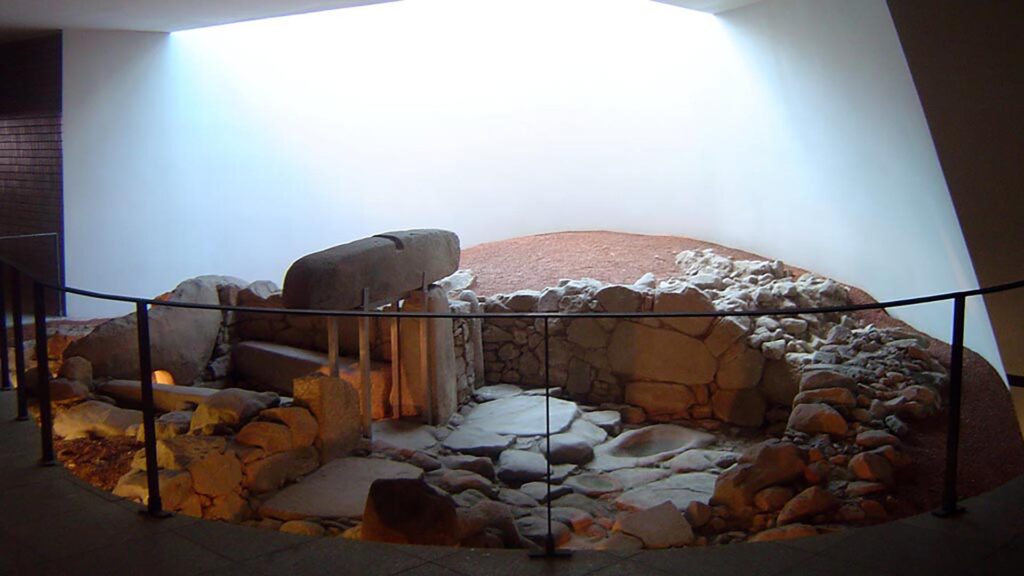
x
Roman Wall and Rua da Violinha
This street connects Largo da Praça Velha and Rua D. Paio Mendes. The name of this street results from a possible alteration, by popular use of the name “vielinha”. For some time, it was popularly known as the street of the chicken coops, since the former residents of the street raised roosters, hens and turkeys. Some say that the current name of the street is related to the production of the popular cavaquinhos, which were made in some houses on the street. What we do know is that it is the narrowest street in the city and that the people of Braga have a special affection for it.
x
Braga Cathedral
The Cathedral of Braga was the first Portuguese cathedral, built several decades before the country was founded. It began to be built at the end of the 11th century, was consecrated and dedicated to the Virgin Mary by Bishop D. Pedro in 1089. Pedro in 1089 and is the city’s ex-libris. Count Henry and Countess Teresa, parents of the first king of Portugal, Afonso Henriques, are buried here, in the Chapel of the Kings. Historians believe that the cathedral was built on top of an ancient Roman temple.
It is worth going around the Cathedral to see the peculiar figure of Nossa Senhora do Leite, a replica of the original, which is in the Museum of the Treasury of the Cathedral of Braga and which you can also visit. This figure is related to the cult of figures associated with abundance, magic, nature and motherhood, known to the Bracaros, which is confirmed by the association of this same site with the goddess Isis.
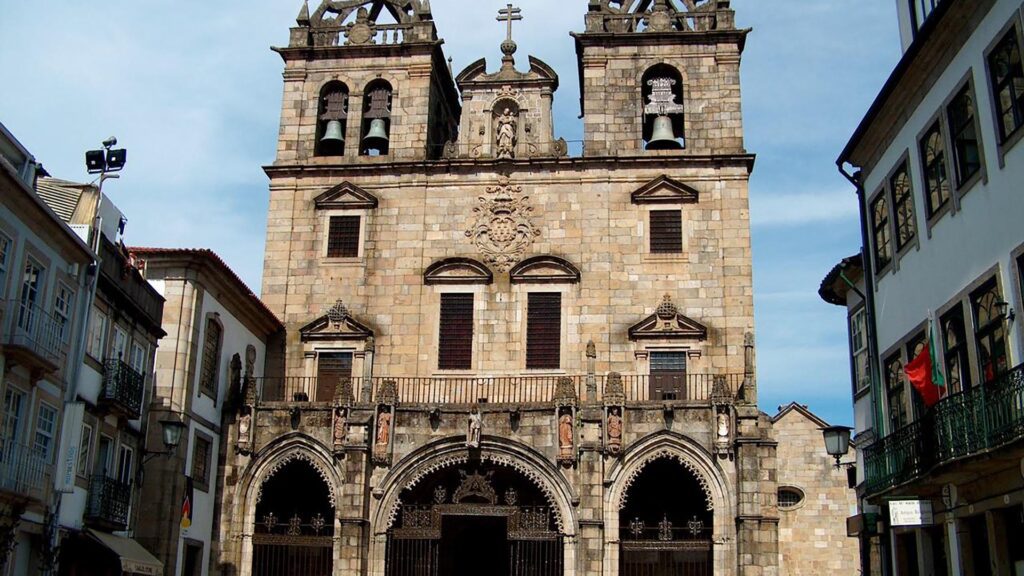
x
Casa Romana, in Frigideiras do Cantinho
In 1996, as part of the latest refurbishment of the Frigideiras do Cantinho building – where the homonymous Minho minced meat puffs are sold – structures belonging to a Roman house were found, dating from the 3rd to 5th centuries. The ruins reveal that there was a compartment heated by a system of hypocausts with columns, private baths, like so many others identified in Bracara Augusta. The ruins are preserved in situ, so you can see them through a glass floor inside the establishment.
x
Largo de Santiago and Milestone
In this square we find a monument in the shape of a milestone. Roman milestones were placed on Roman roads at intervals of about 1480 meters, and inscribed the number of miles relative to that road, also containing the distance to the Roman forum and other information about its construction. The distance was measured by the steps taken by the Roman armies. Every thousand double steps were marked with a milestone. We can see several examples of these milestones in the D. Diogo de Sousa museum, also in the city of Braga.
x
Roman Domus of Largo de São Paulo
Several Roman walls were identified in 1998. The positioning of the walls in the Roman city allows us to know that they were integrated into a residential block, as they were part of a domus (a family house). The characteristics of the construction and the fact that some of them covered the street space allowed us to realize that the structures belonged to two distinct moments of occupation. The oldest walls date back to the 19th century. I and II (Phase I), in various spaces associated with the north-west quadrant of the house, some of which probably corresponded to stores opening onto a portico. As in other better known domus in the city, the portico space seems to have been built in the 4th century, after which the dwelling was expanded, which already occurred in the 5th / 6th century (Phase II).
x
Domus da Escola Velha da Sé
Between 1998 and 2003, as part of a project promoted by the Braga City Council, an intervention was carried out with the aim of reformulating the architectural interior of the Old School building. During the excavations, remains of part of a Roman house were identified, as well as structures associated with the medieval defensive system of the city of Braga. The interpretation of the archaeological remains has led us to know that the Roman house (domus) had its origin in the 1st century, undergoing profound changes between the 3rd century and the beginning of the 4th century. It then had a private shower room, new rooms and corridors, which were lined with geometric mosaics. The current space is an Archaeological Museum, equipped with interactive means to receive visitors and tell the story of the architectural evolution of the site, which is worth visiting.

x
Roman Baths of Alto da Cividade
Discovered in an archaeological intervention conducted by the Archaeology Unit of the University of Minho between 1977 and 1999, the Roman baths are located in a large fenced area. The interpretation of the remains to which they refer allows us to affirm that the building was built at the beginning of the 2nd century AD and that it had a rectangular shape, about 40m long by 12m wide. Inside, there were several cold and warm compartments that allowed visitors to move between the cold and heated spaces. To the west is a space for physical exercise.
In 1999, archaeological remains of a theater (not yet fully excavated) were identified on the same site, in the northern areas of the thermal building, whose construction must have occurred simultaneously with that of the thermal baths, thus being associated with them. In the archaeological space of “Alto da Cividade” it is currently possible to visit the archaeological remains of the Roman baths and its public reception area is equipped with an interactive device that allows the visitor to understand the evolution of the building and its functions of its various spaces.
x
Roman Forum
In ancient Roman cities, forums were an open space surrounded by public buildings, which served as a meeting place and may have been a re-adaptation of the Greek agora. Eixo central do urbanismo em qualquer cidade de fundação romana, o fórum foi também um local de mercado, de cerimônias religiosas e dos atos cívicos mais importantes de qualquer cidade.
x
The Fountain of the Idol
Classified as a National Monument since 1910, the Idol Fountain is a rock sanctuary, dedicated to a local god called Tongoenabiago, associated with watercourses. The monument, which has survived to the present day, can be visited on Rua do Raio, through a guided tour, in a context that reconciles history and archeology.

Did you like to know a little about the Roman legacy of this city with more than 2000 years of history? There is much more to discover, between Roman, Baroque and contemporary buildings. You cannot miss a visit to one of the most beautiful cities in Portugal and recently elected Best European Destination 2021!

